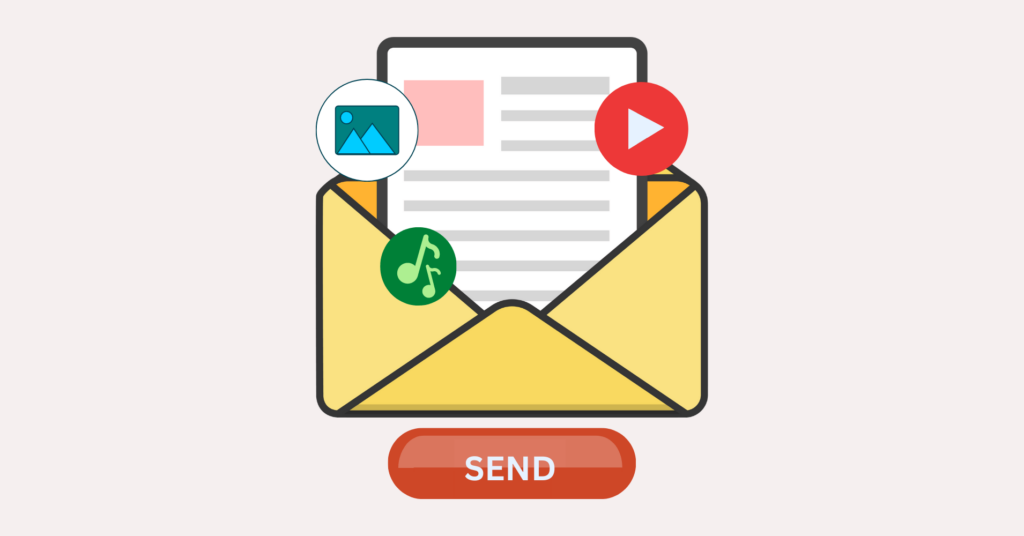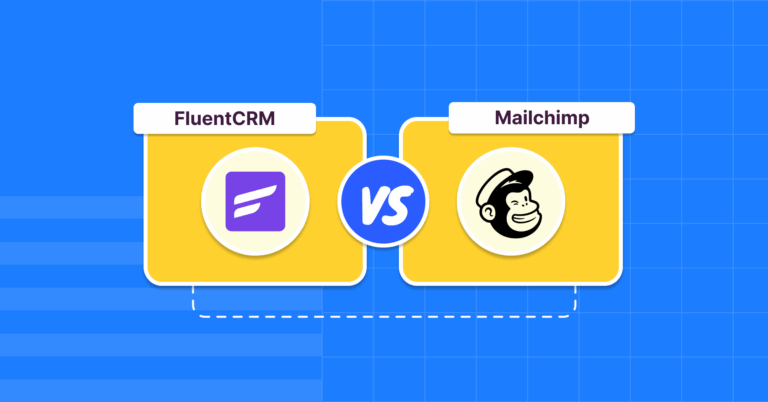
18+ Common Email Marketing Mistakes You Should Avoid
Share :

We will never spam you. We will only send you product updates and tips.
When it comes to marketing a business online, email marketing is a very powerful component. It’s the quickest and easiest way to turn your subscribers into customers. But you’re probably making common email marketing mistakes you haven’t realized yet!
Before we jump into the details, we first have to start with the definition.
What is email marketing?
The term is pretty self-explanatory. Email marketing is a form of digital marketing that involves sending promotional messages to a list of email subscribers.
The messages are usually sent through newsletters, product announcements, and other marketing materials. It promotes products and services, builds customer loyalty and engagement, and drives sales.
If you are new to email marketing, we highly suggest you follow our beginner’s guide to email marketing.
Benefits of email marketing
Email marketing benefits are too many to name- cost effectiveness, time efficiency, and various other perks. It allows businesses to main relationships with customers and prospects, resulting in more sales and customer loyalty.

You can reach a wide variety of customers on their different stages of the “buyer’s journey” with email marketing. Email marketing also comes at a fraction of the cost of traditional advertising campaigns.
Finally, email marketing can help improve brand awareness and is a powerful way to build customer relationships over time.
To learn more about it, you should check out our detailed blog on the benefits of email marketing.
Albeit of all those benefits, if you are not getting the best results in customer retention through email marketing, you are not doing it right. So, let’s continue and address mistakes in marketing emails.
Common email marketing mistakes to avoid
The list can go on if we consider noobs or beginners.
Unfortunately, we can’t include all of them here and test your patience. So, we will address the most common ones with easy fixes you can manage without spending too much time or money.
Here’s a list of 19 common email marketing mistakes:
- Adding irrelevant subject line
- Not segmenting your audience
- Using spammy words in the email body
- Emails not optimized for mobile
- Inability to track campaigns
- Lack of email personalization
- Not using email automation
- Failing to use A/B testing
- Not giving enough importance to CTA (Call-To-Action)
- Not using an email list verification service
- Not following best practices for email design and copy
- Improper timing in sending emails
- Making the email too graphic-heavy
- Neglecting GDPR guidelines
- Flooding the subscribers’ inboxes with emails
- Ignoring unsubscribe requests
- Not using automatic follow-up emails
- Not prioritizing website signups
- Only sending emails on discounts and promotions
Adding irrelevant subject line
Let’s address it; the first thing you notice in an email is the subject line. As a business owner, when you send your subscribers emails related to your business, using a to-the-point subject line is a must.
This factor determines whether the receiver will open your email or not. If it’s not relevant to the audience, there’s a high chance that your email will end up in the trash.
Too many hyped-up subject lines may seem sus at first sight, and the reader may mark it as spam in no time. Make sure to avoid this mistake in your email.
The subject lines should feel to the point and concise, providing value to the customer experience. Don’t yell in “ALL CAPS” to the customer on the subject line, as that’s a red flag too.
Not segmenting your audience

Segmenting your audience enables you to tailor your email campaigns to the specific needs of each segment. Creating a targeted message for each segment can increase the likelihood of a successful email campaign.
Email segmentation has become easier with a lot of dedicated tools available on the internet. These types of tools are called Customer Relationship Management tools, or CRM. They offer you advanced customer segmentation features and other perks.
Using spammy words in the email body
Using words like “free,” “guaranteed,” or “click here” in your emails can trigger spam filters and land your emails in the spam folder. To avoid this, you should use more natural language in your emails and avoid words that look too promotional.
When sending engaging emails as part of an advertising or marketing campaign, it’s best to keep the language and tone professional while refraining from excessive exaggeration.
Additionally, it’s a good idea to include a privacy notice in each email. Hence, the reader knows how to unsubscribe if they no longer wish to receive emails from your company.
Emails not optimized for mobile
Mobile optimization is essential for email marketing. Stats say that mobile users read 70% of your emails, and forgetting their user experience is an expensive mistake we can’t afford to make.
Most people now check their emails on their phones, so making sure your emails look good on mobile devices is important. This includes using a responsive design, shortening the subject line, and using a single-column layout.
Inability to track campaigns
Tracking campaigns is important to understand how successful your emails are and what areas need improvement. If you are not tracking your campaigns, you won’t be able to make the necessary improvements to make your campaigns more successful.
Lack of email personalization

Personalized emails have higher open and click-through rates than generic ones. You can personalize emails by including the recipient’s name in the subject line and body and data about their interests or preferences in the content.
Personalization makes the recipient feel special; just because you remember his/her name in the email, the recipient will most likely remember your brand name for this. Consider this pointer for a greater return in email marketing.
Not using email automation
Email automation is one of the most important tools for successful email marketing. This technology enables marketers to automate the process of sending emails to customers.
Without it, marketers would have to manually manage and send every email, which would be incredibly time-consuming and inefficient. Not using email automation means missing out on a valuable tool for reaching customers and increasing engagement.
Thanks to CRM tools like FluentCRM, you can easily automate emails for a successful marketing campaign.
Failing to use A/B testing
A/B testing is a crucial part of digital marketing. It is a way of testing different versions of a website, app or email to see which performs better in terms of user engagement, click-through rate, conversion rate, or other metrics.
By testing two different versions, marketers can determine which version of the email resonates better with their target audience and has a higher rate of success. This can result in increased customer satisfaction, customer retention, and sales.
You can test different subject lines, content, and design elements to determine which version performs better. For a successful email marketing campaign, A/B testing is a must-use technique for marketers.
Not giving enough importance to CTA
The CTA is what encourages recipients to take action after reading your email. If your CTA is unclear or not prominent enough, it could lead to fewer people taking action.
Call-to-action is a powerful tool you should utilize in email marketing. They provide instant value to the customer. Call-to-actions can generate leads in the most natural way.
Not using an email list verification service
Email list verification is an important step to ensure that your emails are being delivered to the right people. You can use an email list verification service to check your list for invalid emails and remove them from your list.
You can choose double opt-ins to reduce the number of spam email addresses. This is a good measure from your side. However, it cuts both ways. Potential leads may flee due to the extra hassle in double opt-in process. We suggest you use it accordingly to your benefit.
Not following best practices for email design and copy
Following best practices for email design and copy helps ensure that your emails look professional and are more likely to be opened and read. Proper email design is essential for successful email marketing. This includes using appropriate fonts, colors, images, and concise and engaging copy.
Additionally, following best practices for email design, such as keeping the email template consistent and ensuring the “From” field is accurate, is important to create a professional email. Broken email designs are a big problem that email marketing campaigns suffer from.
Improper timing in sending emails
Timing emails is essential for successful email marketing. Sending emails at the wrong time can lead to low open rates and unsubscribes. It is important to send emails when your subscribers are most likely to open them and take action.
Although there are no hard and fast rules regarding this matter, we suggest you pick an optimal time. Generally 9:00-11:00 AM is a good time to send marketing emails because working people check their notifications during this time.
For evening emails, we suggest you don’t plan to send them in the dead of night. 7:00-10:00 PM is also an optimal time to run an email marketing campaign.
Making the email too graphic-heavy

Including too many images in an email can drastically reduce the open rate and make the email difficult to read. Using images sparingly in emails is important and only includes relevant and engaging images.
Including charts and sales, highlight graphics help increase the conversion rate, you should not go overboard with them. Remember that they are the spices to your main dish. Use it moderately, and it will make your marketing dish tasty, use it too much, and you will spoil the entire meal.
Neglecting GDPR guidelines
Following GDPR guidelines is essential for email marketing. This includes providing clear opt-in and opt-out options, being transparent about how data is used, and getting explicit consent from subscribers before sending emails.
Suppose you are not following the GDPR in email marketing. In that case, you are hurting your brand image, which will hamper your brand in the long run.
Flooding the subscribers’ inbox with emails
Sending too many emails can lead to unsubscribes and a decrease in open rates. It is important to send emails at the right frequency and ensure they are relevant and engaging for the subscribers.
Always try to be on the middle ground with nothing more or nothing less when sending emails to subscribers.
Emails gone wrong? Here’s why- Too many emails have pissed off your audience, and they started unsubscribing to your emails.
Ignoring unsubscribe requests
This is a major mistake as it disregards customers’ privacy. Not only is it a breach of trust, but it also puts your business at risk of being flagged for spam.
To avoid getting flagged as spam, always consider this point and keep the option to unsubscribe easily accessible.
Not using automatic follow-up emails
Follow-up emails are important for engaging with customers and driving sales. Without them, building relationships with customers and generating repeat business can be difficult.
Not prioritizing website signups
Website signups are essential for keeping in touch with your customers and engaging them with your brand. Without signups, you are missing out on potential leads and sales opportunities.
Keeping the customer engaged with your business is a crucial part of successful marketing. That’s why you should always keep an email signup option on your website so that the consumer can feel connected to your business.
Only sending emails on discounts and promotions

While discounts and promotions are important to drive sales, they should not be the only focus of your email campaigns. You should also be sending emails to educate and inform customers, as well as to build relationships and create loyalty.
Sending informative blogs, webinars, and other helpful content rather than selling pitches is a great way to build a great relationship with your customers.
Final Words
Email marketing can be a powerful tool to help you reach your business goals. However, it’s important to avoid common mistakes to ensure that your campaigns are effective.
Some mistakes include not personalizing emails, sending too many emails, not segmenting your list, not testing your emails, and using too much jargon or industry-specific language. Throughout our article, we’ve listed some common email marketing mistakes you should avoid in detail.
Taking the time to avoid these mistakes can help you create effective and successful email campaigns to help you reach your business goals.
Hopefully, you have learned a thing or two from reading it. Avoid marketing blunders, and you can target far more audiences effectively than traditional marketing methods.

Author: Romeo Nicholas Rozario
Romeo is a creative content writer for WPManageNinja and a tech enthusiast. On the flip side, a musician by passion when he’s free.






Leave a Reply
You must be logged in to post a comment.